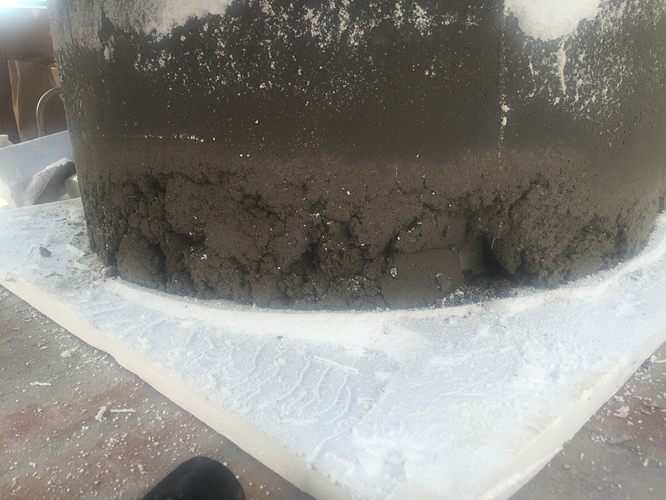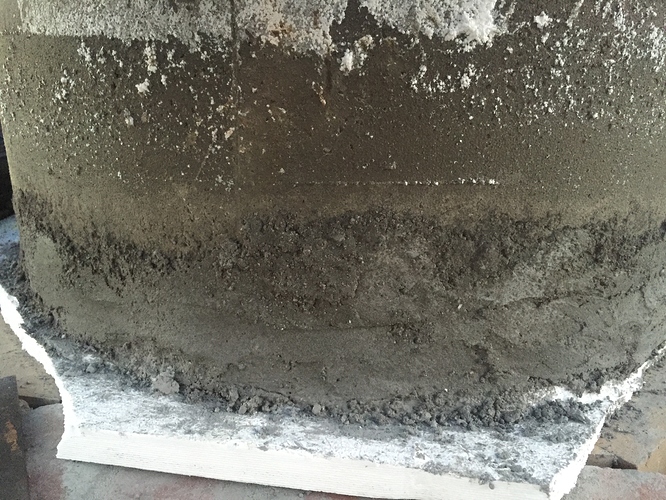When you remove the foam mold, you may see some small pinholes, small gaps and/or voids in the dry castable refractory. DON’T PANIC!
But DO NOT fire the oven until you’ve made a few small repairs! New refractory can bond to dry / clean refractory like white on rice!
PINHOLES - Since this is merely a cosmetic nuisance and not a structural issue, you can put your worries aside. Very soon, you will be wrapping the oven with ceramic fiber blanket and/or applying an exterior veneer finish, you won’t see those pesky pinholes for very long.
SMALL HOLES - If you have a small hole (greater than the size of a quarter but less than the size of your entire thumb), simply mix a small batch of refractory and press it into the hole with putty knife or with the palm of your hand. Preferably, you should use the Castable Refractory, but if you are out, you can use High-Temp mortar.
LARGE HOLES and VOIDS - If you have a void (larger than a whole thumb), you will need to mix a small container of castable refractory (in a little pail) and press the refractory into the large hole or voids with the palm of your hand. You want to make sure every area of that void is injected with refractory so there are NO air pockets.
Side Note and Suggestion:
I have seen a couple of oven kits that were filled riddled with gaps and missing fist-sized areas. It is almost impossible to mess-up that bad - it looked like they were cast by Stevie Wonder. BUT, they were all repaired by simply adding / pressing fresh refractory into the voids and within a week, they were one solid, monolithic piece again.
The best way to prevent pinholes is to pack your castable refractory SLOWLY yet FIRMLY as you are building the oven. The majority of all holes are due to rapid packing during the construction stage. As you are packing the castable refractory with a wood dowel, the castable refractory can stick to the dowel and create an unseen vacuum which will create a holes and gaps.
Here’s an example from a customer that had a serious issue when packing the castable refractory. Once the form was removed, she noticed that she had this large gap where she didn’t get the castable packed very well.
She simply mixed some fresh castable refractory and pressed it into the void. It bonded perfectly and once the oven is wrapped with ceramic fiber blanket, nobody will ever notice the repair.
It should be noted - When working with Castable Refractory, work SLOWLY and firmly pack the refractory. There should be NO air-pockets!
.

